Developer Services
Developer Services contain services used by developers to develop, test and deploy software into the system.
Developer Services include all of the services and subsystems developers need to develop, deploy and maintain
applications and services in the system. This includes DevSecOps Services.
Developer Services High-Level Architecture
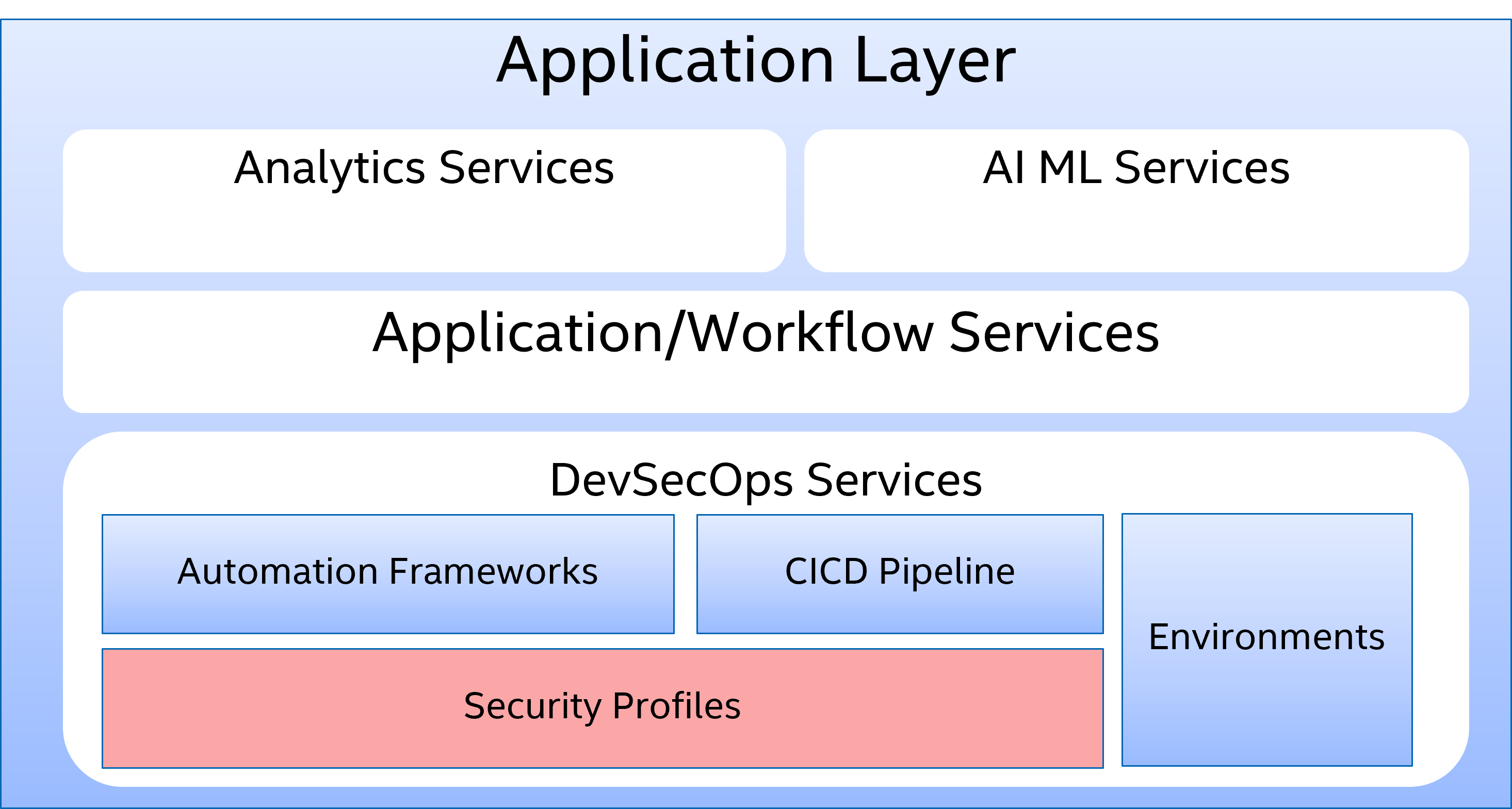
The subsystems included in the Developer Services include
High-Level Deployment Architecture

The developer services sit on top of the Service Management Layer, which provides a
multi-hybrid orchestration for the developer services to deploy specific environments to
develop, test and deploy applications and services. The Multi-Hybrid Cloud abstracts IOT,
Public Clouds, Private Clouds, and Legacy infrastructure this is part of the
Software-Defined Infrastructure Layer.
Continuous Integration & Continuous Deliver PipeLine
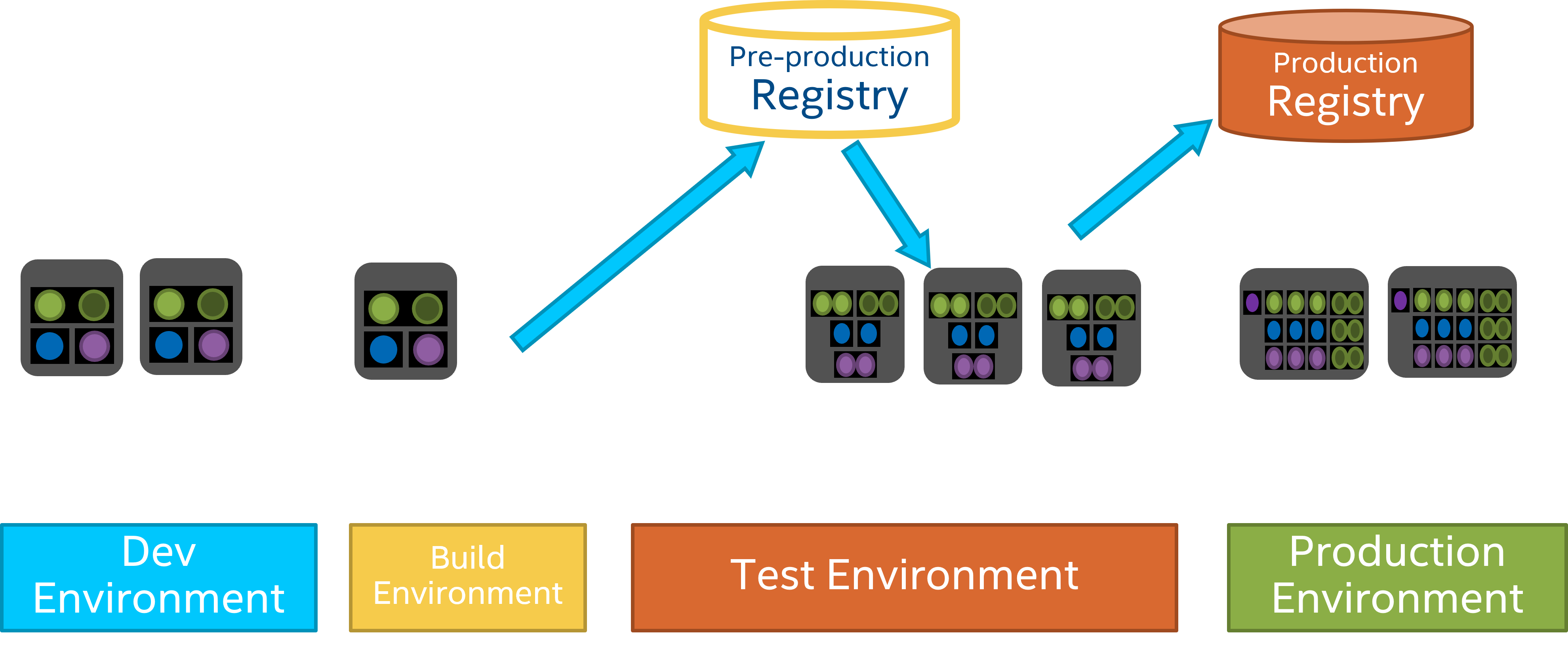
Environment centric Deployments
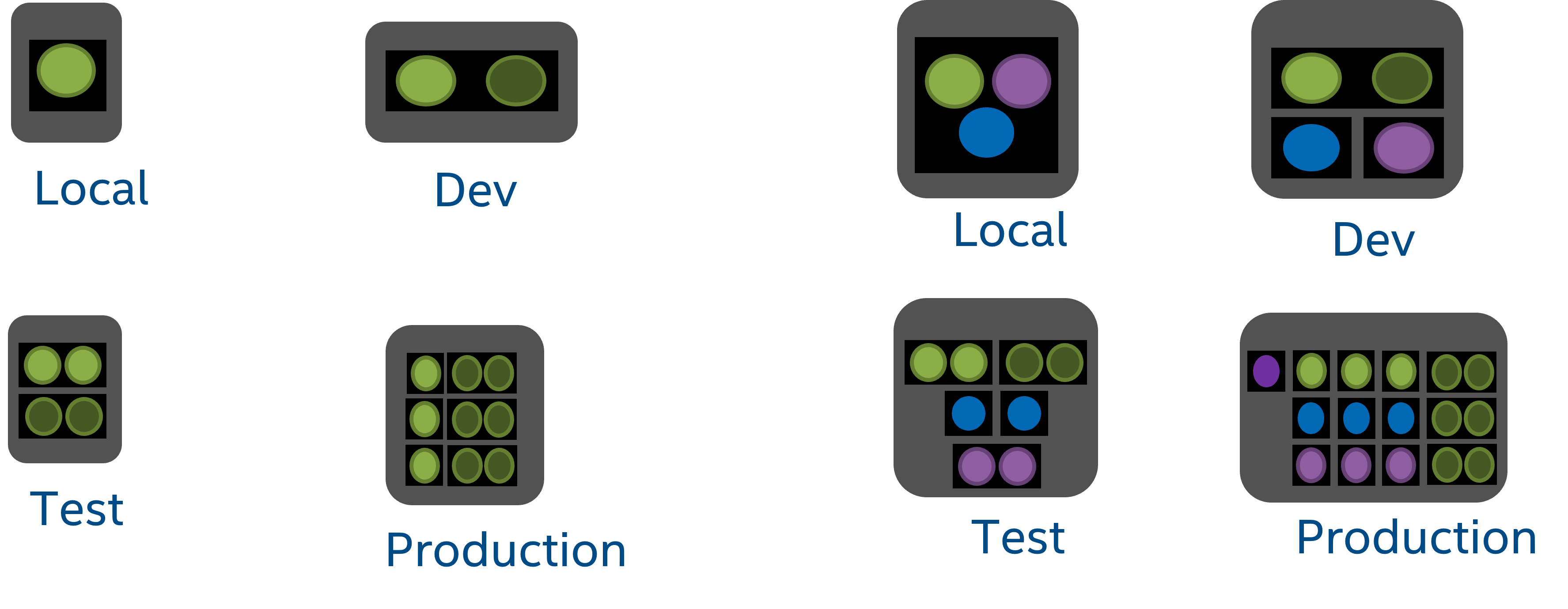
Use Cases
The following are the use cases of the Developer Services subsystem. Each use case has primary and secondary scenarios that are elaborated in the use case descriptions.
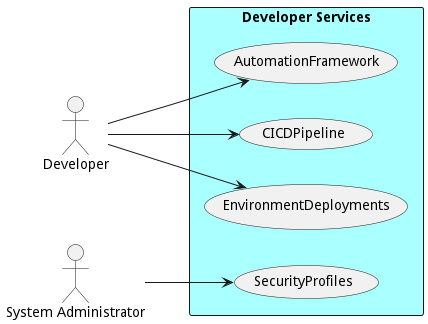
Users
The following are the actors of the Developer Services subsystem. This can include people, other subsystems inside the solution and even external subsystems.
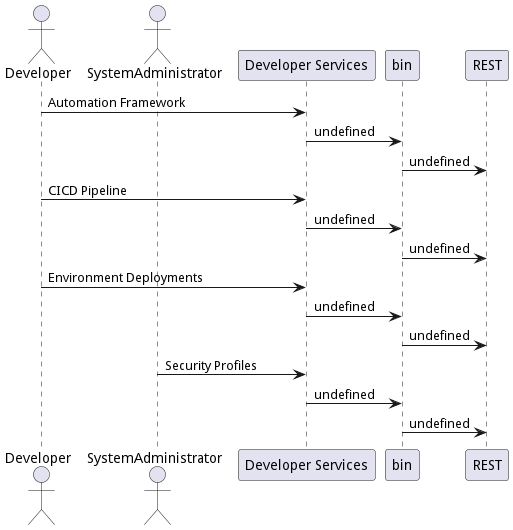
Interface
The subsystem has a REST, CLI, WebSocket, and Web interface. Use Cases and Scenarios can use any or all of the interfaces to perform the work that needs to be completed. The following diagram shows how users interact with the system.

Logical Artifacts
The Data Model for the Developer Services subsystem shows how the different objects and classes of object interact and their structure.

Sub Packages
The Developer Services subsystem has sub packages as well. These subsystems are logical components to better organize the architecture and make it easier to analyze, understand, design, and implement.
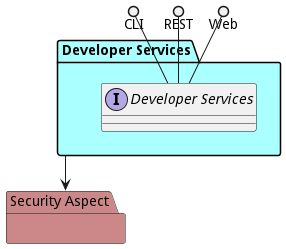
Classes
The following are the classes in the data model of the Developer Services subsystem.
Deployment Architecture
This subsystem is deployed using micro-services as shown in the diagram below. The ‘micro’ module is used to implement the micro-services in the system. The subsystem also has an CLI, REST and Web Interface exposed through a nodejs application. The nodejs application will interface with the micro-services and can monitor and drive work-flows through the mesh of micro-services. The deployment of the subsystem is dependent on the environment it is deployed. This subsystem has the following environments:
Physical Architecture
The Developer Services subsystem is physically laid out on a hybrid cloud infrastructure. Each microservice belongs to a secure micro-segmented network. All of the micro-services communicate to each other and the main app through a REST interface. A Command Line Interface (CLI), REST or Web User interface for the app is how other subsystems or actors interact. Requests are forwarded to micro-services through the REST interface of each micro-service. The subsystem has the a unique layout based on the environment the physical space. The following are the environments for this subsystems.
Micro-Services
These are the micro-services for the subsystem. The combination of the micro-services help implement the subsystem’s logic.
dev
Detail information for the dev environment can be found here
Services in the dev environment
- web : aml_ds_web
test
Detail information for the test environment can be found here
Services in the test environment
- web : aml_ds_web
prod
Detail information for the prod environment can be found here
Services in the prod environment
- web : aml_ds_web
Activities and Flows
The Developer Services subsystem provides the following activities and flows that help satisfy the use cases and scenarios of the subsystem.
Messages Sent
| Event | Description | Emitter | |——-|————-|———|
Interface Details
The Developer Services subsystem has a well defined interface. This interface can be accessed using a command line interface (CLI), REST interface, and Web user interface. This interface is how all other subsystems and actors can access the system.